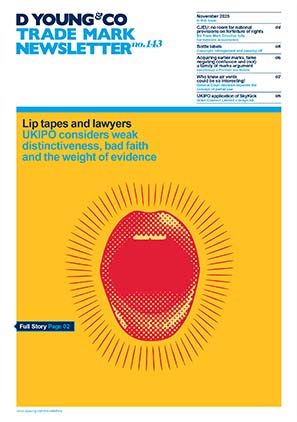German Supreme Court applies CJEU DOCERAM judgment for the first time
On 08 March 2018 the Court of Justice of the European Union (CJEU) handed down its decision in DOCERAM v CeramTec (C-395/16), in which it defended design infringement claims on the grounds of the alleged technical features of a claimed registered Community design (RCD) and the technical features of the design per se.
The decision has since thrown into question how existing parallel patent and utility model publications affect design protection. Paragraph 38 of the decision states:
In order to determine whether the relevant features of appearance of a product are solely dictated by its technical function,… the national court must take account of all the objective circumstances relevant to each individual case
Seeking to provide more tangible criteria for assessing whether an RCD would be dictated solely by its technical function and thereby fall under Article 8(1) of the EU Community Design Regulation (6/2002), the Higher Regional Court of Frankfurt am Main referred to the requirement of an aesthetic surplus to set the minimum standards of design protection for patented solutions, which other German courts (eg, the Higher Regional Courts of Cologne and Nuremberg) had not adapted.
The German Federal Supreme Court has now also rejected this concept in the Papierspender (I ZR 137/19) case originating from the Dusseldorf courts.
Background
In Papierspender, the owner of an RCD for a paper tissue dispenser sued a competitor for infringement of its claimed design 001344022-0006 (represented in the three figures below).

The defendant filed a counterclaim alleging invalidity of the claimed design under Article 8(1), pointing to the parallel patent protection under European Patent 2897793, including, among other things, the following representations:

In the first instance, the Dusseldorf District Court found the defendant to have infringed the claimant’s design and dismissed its counterclaim of invalidity.
On appeal by the defendant, the Higher Regional Court of Dusseldorf declared the claimed design to be invalid and argued in line with the CJEU’s requirements in DOCERAM. In particular, the court considered that the mere existence of a patent for the product is sufficient evidence of the individual elements of the design being purely technical and thereby invalid under Article 8(1).
Decision
The German Federal Supreme Court has now reversed this decision and referred the matter back to the Higher Regional Court of Dusseldorf. The Supreme Court does not consider the concept of the technical function of a product within the meaning of Article 8(1) to be necessarily congruent with the technical teaching protected by a patent, which is why the mere existence of a parallel technical IP right does not automatically result in the invalidity of the design.
Even if a technical IP right could, in principle, be a certain indication of the ineligibility for design protection, further circumstances would also have to be examined in the overall assessment. Still, after DOCERAM, the existence of alternative designs could be relevant. However, design alternatives can no longer be cited as the sole argument for protection.
Further, there is neither a principle of experience nor a factual presumption that considerations relating to the visual appearance of a product do not play a role in the decision of a characteristic design feature, which is necessary for its technical function. The Supreme Court stated that the assessment is a question of each individual case. As considerations relating to the visual appearance of the invention’s characteristics are neither necessary nor excluded per se in patent application publications, the absence of such considerations does not in itself allow the conclusion that a feature of appearance is solely dictated by its technical function. On the other hand, the existence of considerations relating to the technical functions does not presuppose a lack of design considerations. Rather, in both cases, it must be examined whether objective circumstances outside the publication of the patent application documents indicate a visual conditionality of the relevant feature.
The German Federal Supreme Court explicitly rejected the Frankfurt concept of an aesthetic surplus (to which the Dusseldorf Higher Regional Court had referred), arguing that aesthetic content is not a requirement for the protection of an RCD under the EU Community Design Regulation.
This article was first published on World Trademark Review on 22 April 2021: www.worldtrademarkreview.com.
